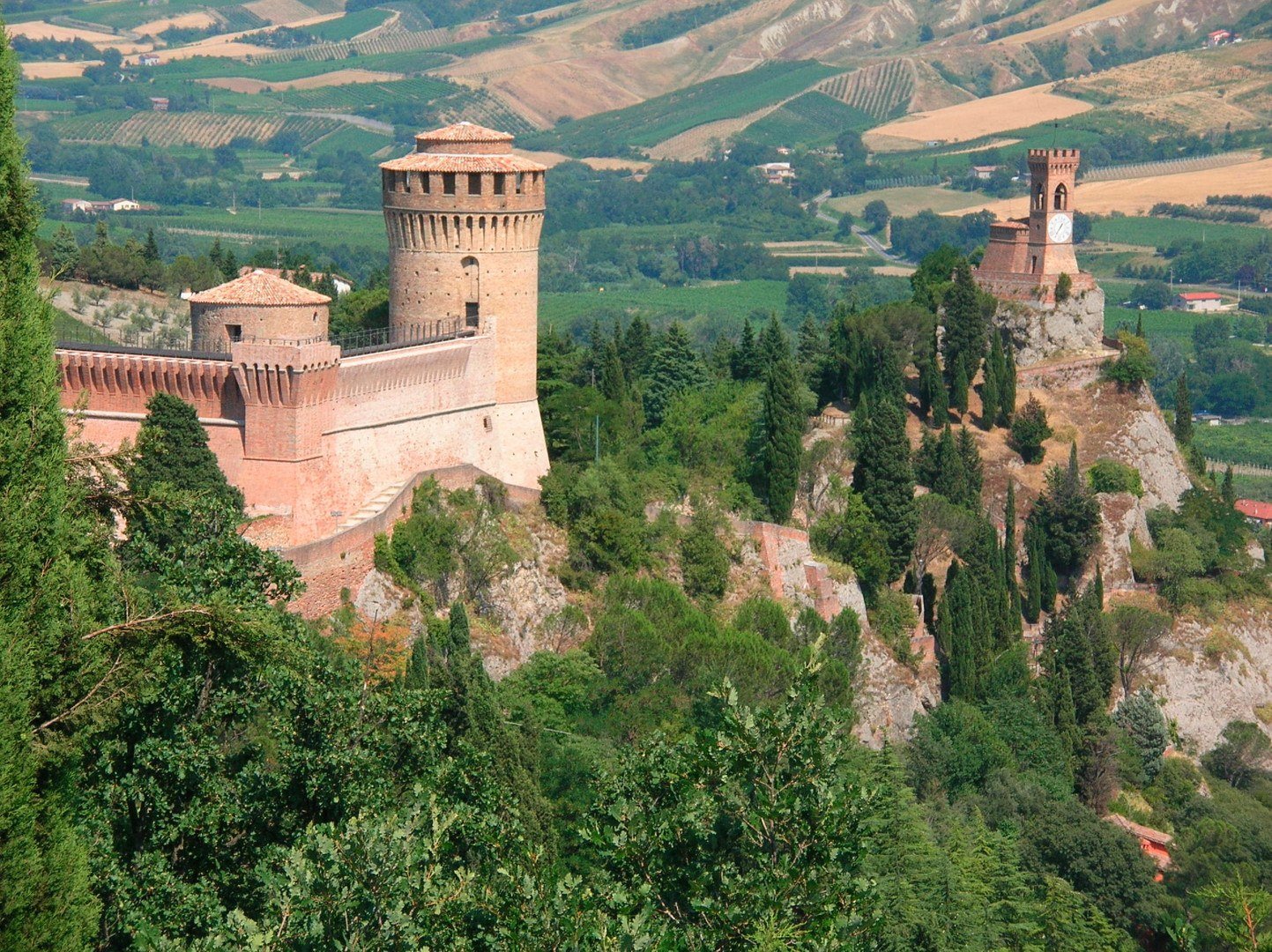Following Donkey Hoof Prints - Brisighella in Emilia Romagna
Brisighella, View of one of its three peaks
Brisighella, Emilia Romagna
Hello everyone,
you may not have heard of Brisighella, which is a medieval town on the border between Emilia Romagna and Tuscany, but it is beautifully quirky and picturesque. In which other town would you find an elevated alleyway designed specifically for donkeys? Well, here you do and, of course, it is called Via degli Asini, or Donkeys Road. It is the most charming and rustic passageway, with ancient beams on the roof and stone arches opening on the street below. For many centuries most of the town inhabitants worked in the chalk mines nearby and needed donkeys to carry their loads down from the mountains and through the town. The donkeys would then sleep in stables by the passageway and the owners and their families on the higher floor.... or in the stables with the donkeys to keep warm, who knows?
Three Hills
Brisighella is in the province of Ravenna and close to Faenza. Ravenna is world famous for the beautiful Byzantine mosaics whilst Faenza is the capital of faience, glazed ceramic ware. The location of Brisighella made it important as it was on the road that linked Florence to Ravenna. It was founded at the end of the 13th century by Maghinardo Pagani, who is mentioned by Dante Alighieri in the Divine Comedy. In fact Dante puts Maghinardo in Hell, since the lord changed his allegiance a couple of times, from Guelf to Ghibelline and then back again. I have sympathy for the man though because he was probably just trying to survive and keep his earldom in those turbulent times.
Torre dei Veneziani Brisighella
The town is built on three chalk hills, on one you will find the fortress (Rocca), on one the Clock Tower (Torre dell'Orologio) and the third is known as Little Mountain (Monticino). In 1310 the Manfredis became the earls of Faenza and Brisighella and they had the fortress built. From 1500 to 1503 the town was part of Cesare Borgia's dominions; afterwards it became a possession of the Venetians, who built the present two towers and then it went to the Papal State. The times were definitely turbulent.
What to see
The fortress has all the features of a medieval castle such as walkways, battlements, arrow slits, dungeons and the remainder of the drawbridge. Inside you will also find a museum, Man and Chalk (l'Uomo e il Gesso} which explores the relationship between man and this important geological material.
From the hill with the fortress you can walk to the Clock Tower, which also used to be a defensive building - the clock was added in 1850. What is wonderful here is the panorama of the valleys below. On the third hill, the Monticino, you will find a sanctuary with a beautiful church.
The three hills can be reached by a paved footpath which departs from the centre of Brisighella.
Flight into Egypt, Scrovegni Chapel, Padua
Donkeys and Art
Brisighella and its Donkeys Road reminds me of how often we see donkeys in religious art. Whilst in Roman sculptures and stone friezes you see emperors and generals on horseback, Christian images from the fourth century onwards show donkeys. It was at this time that Christianity became the state religion of the Roman Empire, and Roman values of power and prowess were replaced by Christian humility and kindness. One of the earliest images of Christ on a donkey is from a marble tombstone dating to the fourth century which is now at the Museo Nazionale delle Terme in Rome.
Throughout the middle ages and into the Renaissance donkeys continue to be present in association with religious images, especially in Nativity scenes. One beautiful example is the Flight into Egypt fresco in the Scrovegni chapel in Padua. Giotto, the painter, puts the donkey at the centre of the scene and gives the animal a very sympathetic and realistic appearance.
Detail from Mystic Nativity, Sandro Botticelli, National Gallery
In the Mystic Nativity by Sandro Botticelli the figure of the kneeling Madonna is set against the curve of the donkey behind - both Mary and the donkey are bowing to Jesus. What higher endorsement is there for the humble and kind animal who has always been there to help man?
Via degli Asini, Brisighella (thank you to Manuela Fiorini who took this photo)






